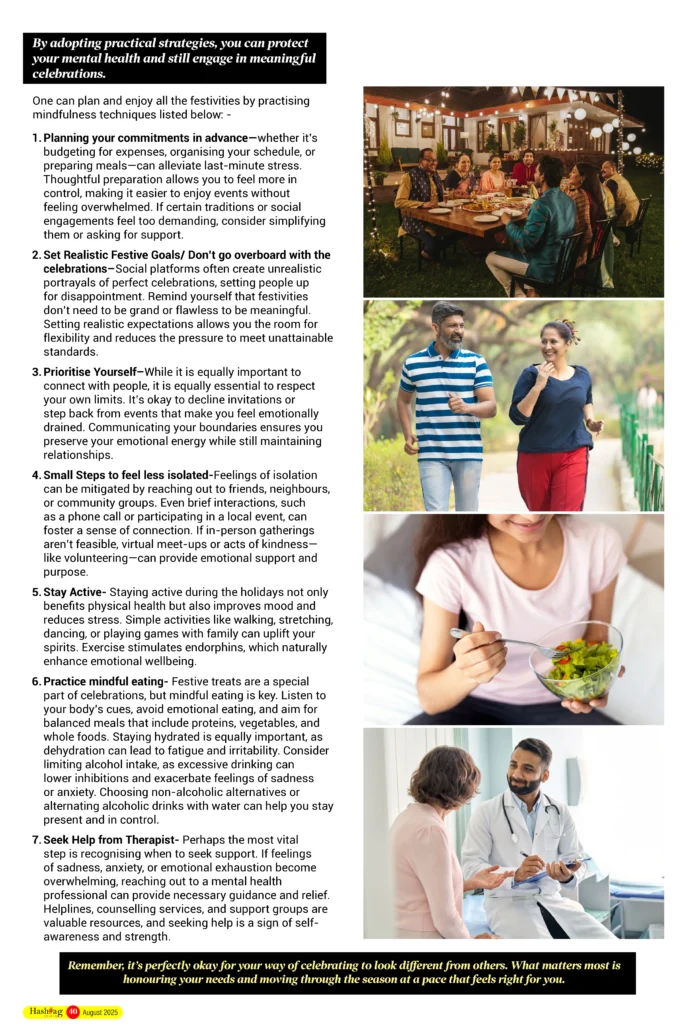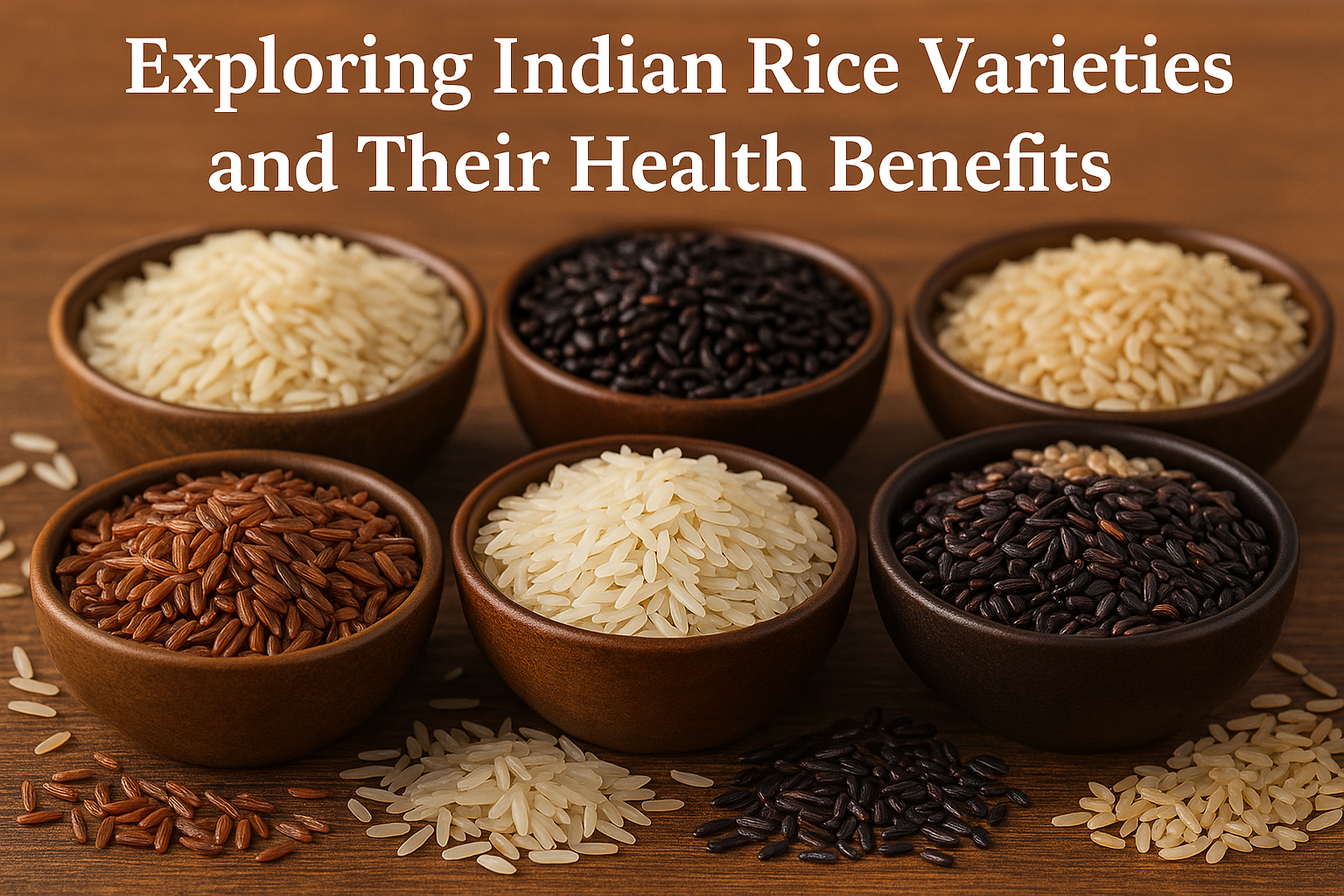As the festive season arrives, it’s easy to get swept up in the celebration and sometimes, overdo it. Between rich sweets, back-to-back parties, and emotional highs (and lows), maintaining your health both physical and emotional can become challenging. SINDURI VUPPALA speaks to two experts Dietician Vidhi Chawla, Founder of FISICO Diet & Aesthetic Clinic, and Rajvir Kohar, a seasoned Mental Health Clinician to bring you a guide on how to eat mindfully and feel emotionally balanced this season.
“It’s okay not to feel festive. Honour your emotions.” – Mental Health Clinician Rajvir Kohar
While cultural celebrations and holidays offer opportunities for connections and joy, they also come with increased expectations and responsibilities. Research indicates that mental health symptoms such as stress, anxiety, disrupted sleep, and emotional eating often rise during the festive season. Many individuals experience heightened stress around the holidays, primarily due to factors such as financial strain, time pressures, and family dynamics.
Financial challenges can be particularly overwhelming, as people feel the burden of purchasing gifts, hosting gatherings, and keeping up with social expectations. For individuals already managing financial constraints, these demands can deepen feelings of inadequacy or guilt.
Additionally, the festive season can bring emotional pain for those grieving the loss of a loved one. Others may experience a profound sense of loneliness, especially if they lack close family or social networks, making the celebratory atmosphere feel isolating rather than inclusive.
Common mental health symptoms during this period include disturbed sleep, changes in appetite (either overeating or under-eating), increased irritability, fatigue, and social withdrawal. While these feelings are common, they often go unnoticed amidst societal expectations to “stay cheerful.”
Despite these challenges, it is possible to approach the festive season with mindfulness and care.
By adopting practical strategies, you can protect your mental health and still engage in
meaningful celebrations.
One can plan and enjoy all the festivities by practising mindfulness techniques listed below
- Planning your commitments in advance: whether it’s budgeting for expenses, organising your schedule, or preparing meals can alleviate last-minute stress. Thoughtful preparation allows you to feel more in control, making it easier to enjoy events without feeling overwhelmed. If certain traditions or social engagements feel too demanding, consider simplifying them or asking for support.
- Set Realistic Festive Goals/ Don’t go overboard with the celebrations: Social platforms often create unrealistic portrayals of perfect celebrations, setting people up for disappointment. Remind yourself that festivities don’t need to be grand or flawless to be meaningful. Setting realistic expectations allows you the room for flexibility and reduces the pressure to meet unattainable standards.
- Prioritise Yourself: While it is equally important to connect with people, it is equally essential to respect your own limits. It’s okay to decline invitations or step back from events that make you feel emotionally drained. Communicating your boundaries ensures you preserve your emotional energy while still maintaining relationships.
- Small Steps to feel less isolated: Feelings of isolation can be mitigated by reaching out to friends, neighbours, or community groups. Even brief interactions, such as a phone call or participating in a local event, can foster a sense of connection. If in-person gatherings aren’t feasible, virtual meet-ups or acts of kindness like volunteering can provide emotional support and purpose.
- Stay Active: Staying active during the holidays not only benefits physical health but also improves mood and reduces stress. Simple activities like walking, stretching, dancing, or playing games with family can uplift your spirits. Exercise stimulates endorphins, which naturally enhance emotional wellbeing.
- Practice mindful eating: Festive treats are a special part of celebrations, but mindful eating is key. Listen to your body’s cues, avoid emotional eating, and aim for balanced meals that include proteins, vegetables, and whole foods. Staying hydrated is equally important, as dehydration can lead to fatigue and irritability. Consider limiting alcohol intake, as excessive drinking can lower inhibitions and exacerbate feelings of sadness or anxiety. Choosing non-alcoholic alternatives or alternating alcoholic drinks with water can help you stay present and in control.
- Seek Help from Therapist: Perhaps the most vital step is recognising when to seek support. If feelings of sadness, anxiety, or emotional exhaustion become overwhelming, reaching out to a mental health professional can provide necessary guidance and relief. Helplines, counselling services, and support groups are valuable resources, and seeking help is a sign of self-awareness and strength.
Remember, it’s perfectly okay for your way of celebrating to look different from others. What matters most is honouring your needs and moving through the season at a pace that feels right for you.
“You don’t have to deprive yourself to stay healthy.” – Dietician Vidhi Chawla
According to Vidhi Chawla, the festive season doesn’t have to mean bloating, fatigue, or post-party guilt. Her approach is all about balance, not restriction.
Her top festive eating tips:
- Practice moderation: Enjoy sweets and rich dishes, but in small, satisfying portions.
- Hydrate wisely: A glass of water before meals can curb cravings and prevent overeating.
- Snack smart: Don’t arrive hungry at a party. A fruit or handful of nuts beforehand helps.
- Choose nutrient-rich options: Fill half your plate with salads or proteins before sampling festive treats.
- Eat mindfully: Chew slowly, savour the flavours, and stop when you’re full.
- Stay active: Even light activity like walking after meals can support digestion and lift your mood.
Vidhi encourages mindful celebration: “You can absolutely enjoy laddoos or biryani. Just don’t forget to listen to your body.”




































